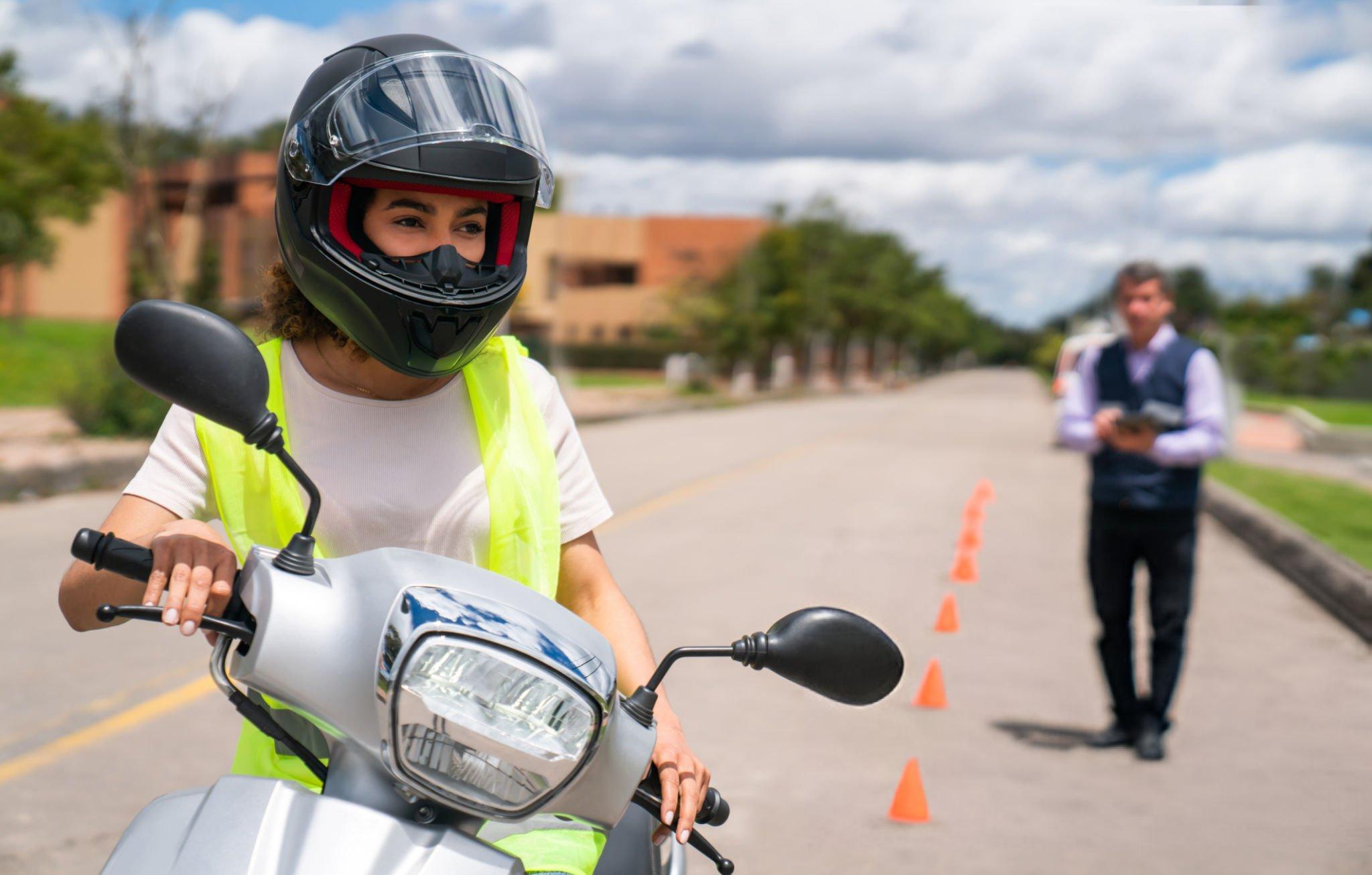Getting your motorcycle licence is exciting, but it’s also easy to feel overwhelmed when test day is coming up. It’s normal to be nervous, especially if you’re worried about remembering everything or making a mistake. Those thoughts can creep in even if you’ve done heaps of training and feel comfortable on your bike. That’s why mental prep is just as important as knowing how to ride.
You wouldn’t walk into a riding test without knowing how to handle a corner or do a smooth stop. In the same way, being mentally prepared helps you stay calm and focused when it counts. It gives you a clear head, faster reactions, and a better chance of doing well overall. Building confidence before your test doesn’t have to be complicated. With a few simple techniques, you can work through nerves and walk into your motorcycle test ready for anything.
Understand Your Fears
If your heart starts to pound just thinking about the test, you’re not alone. Many riders feel anxious about things like forgetting the rules, stalling during the slow ride, or misjudging a figure-eight. Some even worry more about the pressure of being evaluated than they do about the riding itself.
The first step to managing this is to pinpoint what exactly you’re afraid of. Are you nervous about the instructor watching your every move? Is it the fear of failing and having to retake the test? Or maybe it’s the pressure of performing in an unfamiliar setting. Once you put a name to your fears, it’s a lot easier to deal with them.
Here are a few ways to work through those thoughts:
– Write your fears down. Seeing them on paper makes them easier to tackle.
– Challenge each worry. Ask yourself: “Has this happened before?” or “What’s the worst that can really happen?”
– Focus on effort, not perfection. Nobody expects a flawless ride, just safe, confident handling.
– Talk it out. Share your thoughts with a mate who’s taken the test or someone you trust.
– Practice tricky sections. Do these until they feel second nature.
Once you understand what sets off your nerves, you can plan for those moments and not let them take control.
Mental Visualisation Techniques
Your mind plays a huge part in your riding performance. If you’re picturing yourself making mistake after mistake, you’re setting yourself up to feel defeated before the test even begins. But if you mentally walk through each step and imagine doing it well, you’re giving yourself a mental map to follow on test day.
Start by closing your eyes and visualising the full test run. Picture everything: what gear you’re in, how you approach the stop line, the feel of the handlebars, the sound of the engine. Try to include every detail you can think of. You don’t have to get it perfect, but make sure the end of each sequence is a success.
Let’s say you’re worried about the slow-speed ride. Imagine the cones, the clutch in your left hand, feathering the rear brake, and how steady the bike feels. Now picture yourself making it through smooth and clean. That mental image sticks, and your brain gets used to the idea that you can do it correctly.
Try doing this once or twice a day before your test. It takes only a few minutes, and you don’t need any special setup. Just a quiet space and your focus. Over time, this builds muscle memory and helps reduce panic when you’re doing the real thing. Keep your visualisation positive. Don’t focus on what can go wrong. Picture that calm, confident ride from start to finish.
Practice Breathing And Relaxation
When nerves kick in, breathing can get shallow without you even realising it. That tight-chested feeling can make you forget things or freeze up during parts of your motorcycle test. Slowing things down through your breath helps bring your body back into focus and takes the edge off.
A simple method is the 4-4-4 technique: breathe in for four seconds, hold it for four, and then slowly breathe out for four. You can do this before your test, while sitting, or even when waiting next to your bike. It helps clear your head and stops your body from slipping into panic mode. You don’t have to look like you’re deep in meditation either. It’s something you can pull off casually without anyone noticing.
You can also try this:
– Sit or stand with a straight back
– Loosen your shoulders and jaw (they get tight without warning)
– Breathe in deeply through your nose, hold, then breathe out long through your mouth
– Repeat this up to five times to reset your nerves
You might also find it useful to redirect your focus. Instead of worrying about what could go wrong, shift your thinking to what you’ll do next. That keeps your thoughts on the task, not your nerves. Keep your mind tuned into the practical: What’s the next manoeuvre? How do I set up for that turn? What’s my approach speed?
Even a short session of slow breathing before you hop on the bike can give you a more relaxed, ready mindset. Try pairing it with a quick stretch or a quiet 30-second walk if you’ve been waiting around for your test slot. Staying physically loose helps support what you’re doing mentally.
Simulate Test Conditions With A Motorcycle Practise Test
The more familiar something feels, the less space there is for nerves to creep in. That’s why doing a motorcycle practice test under near-test conditions can settle your mind and build real confidence. Think of it like a dress rehearsal before a big show.
Start by finding a quiet location to safely practise exercises that are likely to appear in your actual test. This might include:
– Slow riding in a straight line
– Controlled braking
– U-turns in a small space
– Weaving through cones
– Emergency slowing or stopping
Set up simple markers if you don’t have access to cones. Invite a mate to watch or give feedback. Even just having them stand nearby like an assessor can get your brain used to the idea of performing under observed conditions. If you’ve never done a full run-through, now’s the time.
Here’s how to get the most out of your simulation:
1. Time how long it takes you to complete everything calmly. Don’t rush.
2. Treat any small mistake as a learning opportunity, not a failure.
3. Record your ride (if possible) to watch afterwards and see where tension sneaks in.
4. Do multiple practice runs at different times of day, so you’re comfortable under different light and levels of busyness.
This step creates muscle memory, which makes riding skills quicker to access under pressure. Your body knows what to do without needing your brain to double-check the steps every time. When the test day arrives, it won’t feel like your first time in that zone. It’ll feel familiar.
You’re Closer Than You Think
Getting mentally ready for your motorcycle licence test isn’t about pushing your nerves away. It’s about knowing how to work through them, one step at a time. By identifying the specific thoughts that shake your confidence, using positive visualisation, staying in control of your breathing, and simulating test conditions, you create space for calm and focus to take over.
Confidence doesn’t usually show up all at once. It builds slowly through practice, small wins, and knowing that you’ve given yourself every chance to succeed. Whether it’s a full practice run or just a few minutes visualising your next ride, each thing you do makes a difference.
When the test finally comes around, you’ll walk in with a clear head and steady hands. You’ve prepared mentally and physically. Now it’s time to show what you can do.
Whether you’re gearing up for your first test or looking to brush up on your skills, being prepared in both mind and technique is key. Discover more ways to build confidence with a motorcycle practise test by exploring the range of training options available through Stay Upright. Our courses can help sharpen your skills and get you feeling ready when it counts most.



